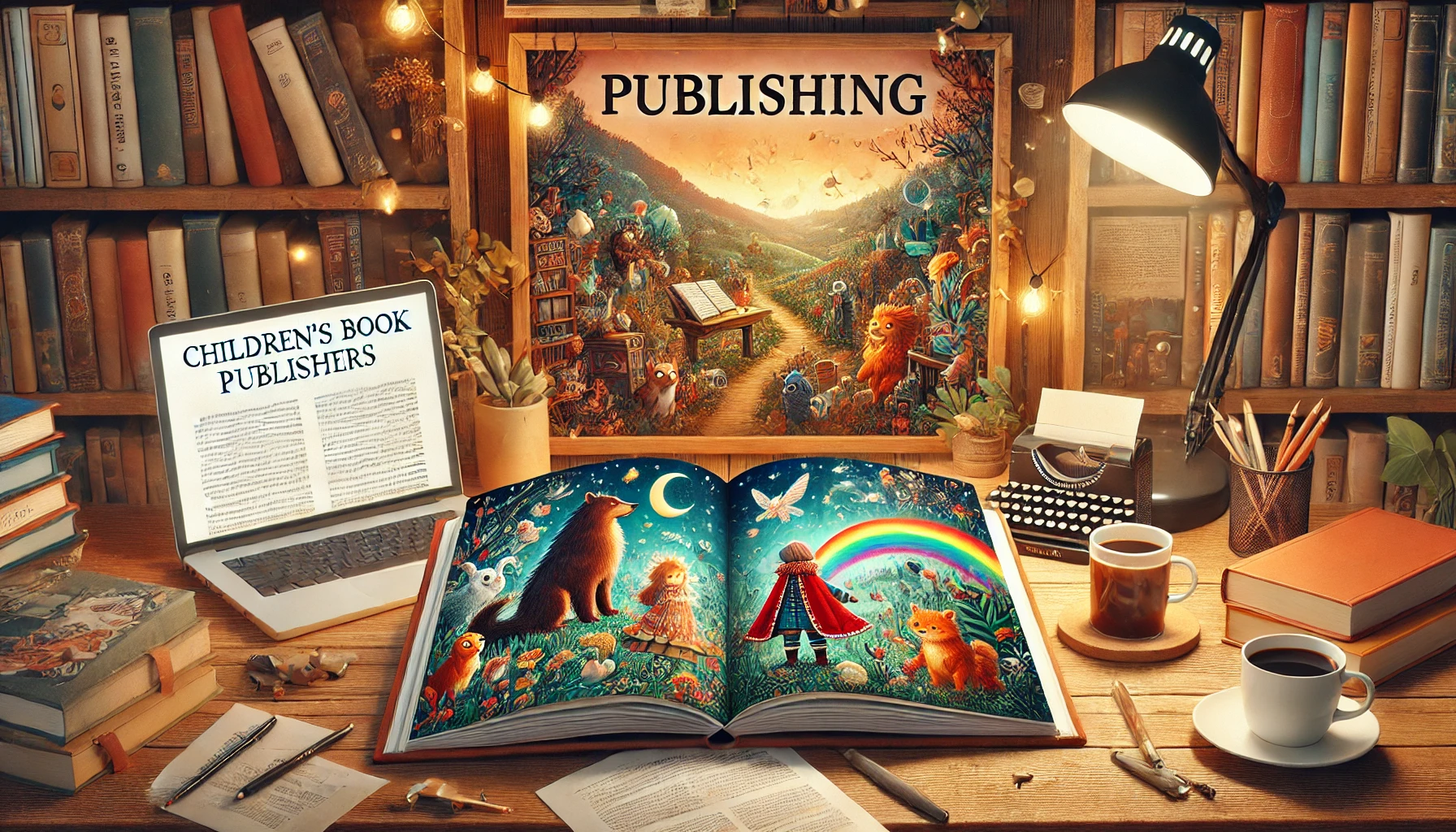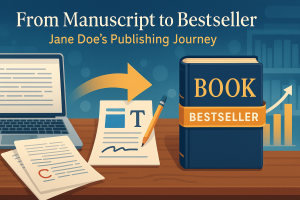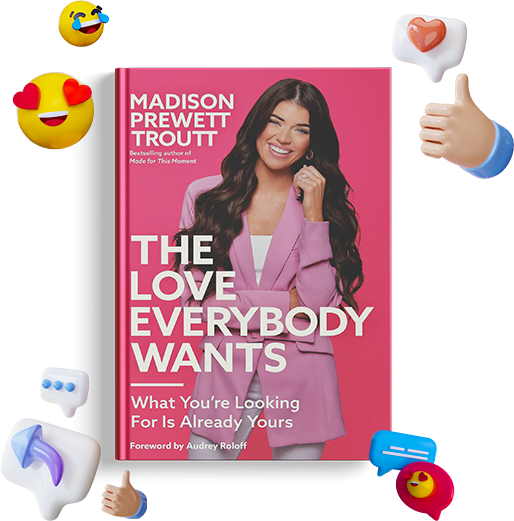Entering the world of children’s literature can be an exciting yet daunting endeavor. Whether you’re a budding writer or a seasoned author seeking a new audience, finding the right children’s book publishers is a pivotal step. This comprehensive guide delves into the top 10 children’s book publishers, explores essential submission tips, and sheds light on the costs you might encounter along the way. By the end of this article, you’ll have a clear roadmap to help you navigate the publishing landscape and bring your story to life in the hands of young readers.
Why Children’s Books Matter
Children’s books hold a special place in the realm of literature. They’re not only a child’s first introduction to reading and storytelling but also a powerful tool for nurturing imagination, empathy, and a lifelong love of learning. Writing for children is a unique craft; authors must balance engaging narratives with age-appropriate language, while also addressing themes that spark curiosity and wonder.
Over the years, the children’s book market has expanded significantly. From picture books and early readers to middle-grade novels and young adult fiction, each category addresses a different developmental stage. This diversity offers countless opportunities for aspiring authors, but also demands an understanding of what resonates with each age group. Whether you’re focusing on moral lessons, imaginative worlds, or everyday life experiences, tapping into the essence of childhood is crucial for success in this field.
Traditional vs. Self-Publishing
Before diving into the list of children’s book publishers, it’s important to decide whether you aim to go the traditional route or explore self-publishing. Each has its own set of pros and cons, and your choice will significantly influence the timeline, creative control, and financial arrangements.
Traditional Publishing
Advantages
- Industry Expertise: Professional editing, design, and marketing support.
- Wider Distribution: Access to established networks, bookstores, and libraries.
- Advance Payments: Potential for upfront payments that can alleviate financial strain.
Challenges
- Longer Timelines: The submission and acceptance process can take months or even years.
- Less Creative Control: Publishers may request changes to align with market trends.
- Competitive Entry: Major houses receive thousands of submissions, so standing out is essential.
Self-Publishing
Advantages
- Creative Control: You decide on design, layout, and marketing strategies.
- Faster Publication: You can launch your book as soon as it’s ready.
- Higher Royalties: You keep a larger share of each sale.
Challenges
- Upfront Costs: Editing, illustration, design, and marketing expenses fall on you.
- Limited Distribution: Gaining entry into brick-and-mortar bookstores can be difficult.
- Marketing Demands: You must handle all promotional activities yourself.
If you’re uncertain about which path to take, you might weigh the pros and cons for self-publishing with Amazon to get a clearer picture of what to expect when choosing a self-publishing route, particularly in the digital marketplace.
Top 10 Children’s Book Publishers
Below is a curated list of some of the most influential children’s book publishers in the industry. Each has a distinct style, submission process, and target audience, so thorough research is vital to find the best match for your manuscript.
1. Penguin Book Writers
Penguin Book Writers is one of the largest global trade book publishers, renowned for its extensive children’s and young adult catalog. Imprints like Puffin Books and Dial Books for Young Readers fall under its umbrella. Known for championing diverse voices and contemporary storytelling, Penguin Book Writers offers authors a vast distribution network.
Key Highlights
- Publishes a wide range of genres, from picture books to YA novels.
- Strong marketing and publicity support.
- Rigorous submission process; often requires a literary agent.
2. HarperCollins
HarperCollins has a rich legacy in publishing children’s literature. With imprints like HarperTeen and Balzer + Bray, it caters to a broad demographic. Their catalog includes everything from beloved picture books to best-selling teen sagas.
Key Highlights
- Known for launching emerging authors.
- Comprehensive editorial guidance.
- Generally requires agented submissions.
3. Scholastic
Famous for publishing iconic series such as “Harry Potter” and “The Magic School Bus,” Scholastic is a giant in the children’s publishing sector. Their reach extends into schools and libraries, offering authors a robust platform for widespread visibility.
Key Highlights
- Direct connections to educational markets.
- Active in organizing book fairs, boosting discoverability.
- Strong brand recognition among teachers, parents, and young readers.
4. Simon & Schuster
Simon & Schuster’s children’s division includes several imprints like Aladdin and Atheneum. Known for championing innovative storytelling, they often seek manuscripts that blend educational value with entertainment.
Key Highlights
- Publishes both fiction and non-fiction for kids of all ages.
- Offers in-depth editorial support.
- Prioritizes stories that resonate with current societal and cultural themes.
5. Houghton Mifflin Harcourt
Houghton Mifflin Harcourt (HMH) stands out for its quality educational materials and a children’s book lineup that merges storytelling with learning. With classic imprints like Clarion Books, HMH is open to a wide array of children’s literature.
Key Highlights
- Strong foothold in educational markets.
- Accepts picture books, middle-grade, and young adult submissions.
- Focuses on timeless themes and high literary merit.
6. Macmillan Children’s Publishing Group
Comprising imprints like Farrar, Straus and Giroux (FSG) Books for Young Readers and Roaring Brook Press, Macmillan Children’s Publishing Group is known for its innovative, boundary-pushing titles. They are open to a range of genres and formats.
Key Highlights
- Strong editorial vision with an emphasis on creativity.
- Caters to multiple age groups, from toddlers to teens.
- Often seeks projects that challenge conventional norms.
7. Candlewick Press
Candlewick Press is an employee-owned publisher celebrated for high-quality picture books, middle-grade, and young adult titles. They maintain a reputation for visually stunning illustrations and compelling narratives.
Key Highlights
- Welcomes unagented submissions for picture books.
- Known for championing debut authors and illustrators.
- High production values in terms of design and artwork.
8. Chronicle Books
Chronicle Books stands out for its distinctive design aesthetic and unique storytelling approach. While they publish across multiple categories, their children’s line is especially lauded for creativity and visual innovation.
Key Highlights
- Emphasizes quirky, design-forward picture books.
- Accepts unagented submissions for certain imprints.
- Broad distribution and a dedicated marketing team.
9. Bloomsbury Children’s Books
Bloomsbury gained global fame through the “Harry Potter” series and has since expanded its children’s division significantly. They focus on both literary and commercial works, seeking authors with fresh voices.
Key Highlights
- Global reach with offices in the UK and US.
- Welcomes diverse voices and themes.
- Offers extensive marketing and publicity campaigns for key titles.
10. Abrams Books
Abrams Books, particularly through its Amulet Books imprint, has published popular middle-grade and YA titles. Known for high production quality and innovative design, Abrams seeks visually striking manuscripts that captivate young audiences.
Key Highlights
- Publishes a variety of illustrated books, including graphic novels.
- Often open to unique formats and creative concepts.
- Encourages manuscripts that blend art and storytelling.
Submission Tips for Children’s Book Publishers
Competing in the children’s book market requires more than just a great story. Publishers and agents receive countless submissions, so crafting a compelling query and following each publisher’s guidelines are essential for standing out.
- Research Each Publisher
Personalize your submission by referencing their current catalog. Show that you understand their brand and audience. - Perfect Your Manuscript
Children’s books must be concise, engaging, and age-appropriate. Consider hiring a freelance editor to polish your work. - Craft a Strong Query Letter
Provide a brief synopsis, target age group, and a short author bio. Focus on what makes your book unique. - Follow Submission Guidelines
Some publishers accept only agented submissions. Others allow direct contact but have strict rules regarding word counts or illustration samples. - Be Patient and Persistent
Rejections are part of the process. Use feedback to refine your manuscript and consider simultaneous submissions if allowed.
Understanding the Costs Involved
While authors are primarily concerned with storytelling, it’s equally important to understand the potential costs you might face. Traditional publishing houses typically cover production expenses—editing, design, marketing—though you may not receive as high a share of royalties. In self-publishing, however, all costs fall on the author.
Common Cost Areas
- Editing and Proofreading: Crucial for ensuring professionalism.
- Illustrations: High-quality artwork is especially important in picture books.
- Layout and Design: Creating visually appealing pages for children’s books often requires specialized software and skills.
- Marketing and Promotion: While traditional publishers handle much of this, self-published authors must invest heavily in ads, social media, and book fairs.
If you’re curious about potential price ranges for going independent, exploring the amazon self-publishing cost can give you concrete numbers on expenses like formatting, cover design, and marketing tools.
Working With the Right Publishing Partner
Even if you decide on a traditional publishing route, it’s vital to choose a house that aligns with your vision. Consider factors like editorial style, marketing reach, and contractual terms. Finding the right publishing partner can mean the difference between a smooth, rewarding process and one fraught with challenges.
When evaluating potential publishers, don’t hesitate to ask questions about their editorial process, expected timelines, and target markets. Look for a publisher that not only appreciates your story but also has the resources and network to bring it to the widest possible audience.
Marketing Your Children’s Book
Even the most captivating story can go unnoticed without a solid marketing strategy. Traditional publishers will handle a portion of promotion, but authors—especially newcomers—are often expected to play an active role.
Key Marketing Strategies
- Social Media Engagement
Platforms like Instagram and Facebook offer direct ways to connect with parents, educators, and young readers. - Book Launch Events
Virtual or in-person events help you build relationships with librarians, teachers, and local communities. - Collaborations and School Visits
Partnering with educators and conducting workshops or readings can create a lasting impression among your target audience. - Online Retail Presence
Having your book on major online retailers is crucial. To understand how to drive visibility on digital platforms, you might explore how to market your own book for a deeper dive into promotional tactics.
Exploring Self-Publishing & Hybrid Models
Self-publishing has grown into a viable pathway for many authors. However, it requires taking on tasks like editing, design, and marketing yourself—or hiring professionals to handle them. Meanwhile, hybrid models offer a blend of both worlds, providing some support from a publishing house while requiring partial investment from the author.
Self-Publishing
If you aim to self-publish a book and become a best-selling author, be prepared to invest time and resources. This book publishing service grants complete creative freedom but demands a robust marketing strategy to reach your audience.
Hybrid Publishing
Hybrid publishers often charge a fee for production and distribution services but also offer professional guidance. They can be an appealing option if you want a more hands-on approach than traditional publishing provides, but with less workload than fully independent publishing.
How Many Pages Should a Children’s Book Be?
The length of a children’s book varies based on the target age group. Picture books can be as short as 24 pages, while middle-grade novels might run from 20,000 to 50,000 words. If you’re unsure, check out guidelines on how many pages should a book be to gain clarity on standard lengths for different formats. Knowing these norms helps you meet publisher and reader expectations.
General Guidelines
- Picture Books: Typically 24–48 pages.
- Early Readers: Around 1,500–5,000 words.
- Middle-Grade: 20,000–50,000 words.
- Young Adult: 50,000–80,000 words.
Potential Earnings and Professional Insights
Publishing children’s books can be financially rewarding, but it’s essential to maintain realistic expectations. Advances and royalties vary widely based on your publisher, contract terms, and sales performance.
Earnings and Royalties
- Advance: An upfront payment from the publisher, recouped through future royalties.
- Royalties: A percentage of each sale, typically ranging from 5% to 15% for print books. E-book royalties can be higher, often 20%–25%.
To get a clearer picture of author earnings, it helps to explore how established writers fare. Checking out how how much does professional authors make can offer insights into typical income ranges and factors influencing earnings in this field.
Conclusion
Navigating the world of children’s book publishers can be both exhilarating and overwhelming. From choosing between traditional and self-publishing to crafting a compelling submission package, each step is crucial to ensuring your story finds its way into the hearts and minds of young readers. Thorough research, patience, and a clear understanding of costs and processes will serve you well in this journey.
If you decide to go the independent route, resources like amazon book publishing can simplify distribution, though you’ll shoulder a greater share of marketing responsibilities. Regardless of the path you choose, remember that persistence and a passion for storytelling are often the most significant factors in an author’s success.
Embrace every stage of the publishing process—from the creative thrill of writing to the meticulous tasks of editing, design, and promotion. As you refine your manuscript, seek out publishers that align with your vision, understand your audience, and offer the support you need. Whether you’re working with an established publishing giant or taking the self-published route, the children’s book market rewards originality, authenticity, and dedication.
By leveraging the strategies outlined here—researching publishers, polishing your manuscript, and proactively marketing your book—you stand a strong chance of transforming your literary dreams into reality. May your stories spark joy, wonder, and inspiration in the hearts of young readers everywhere.









